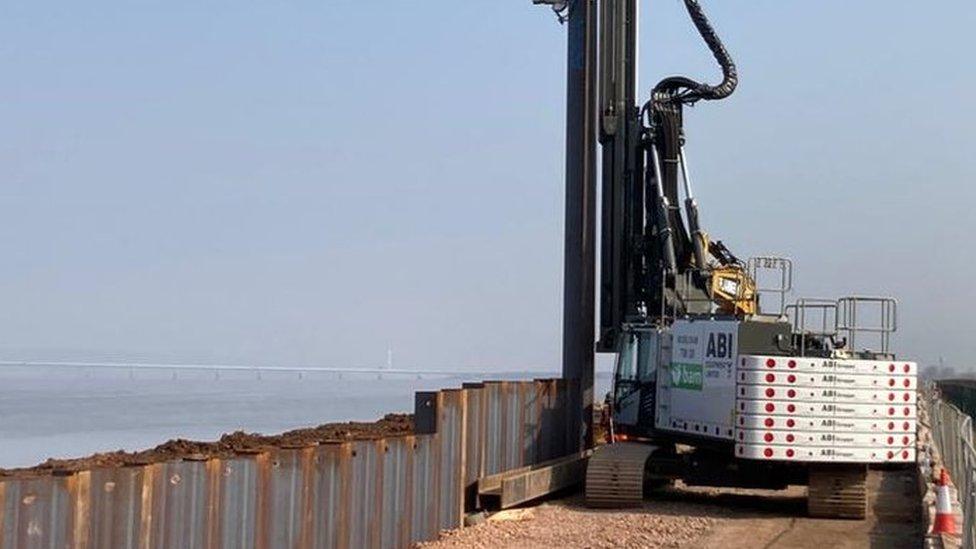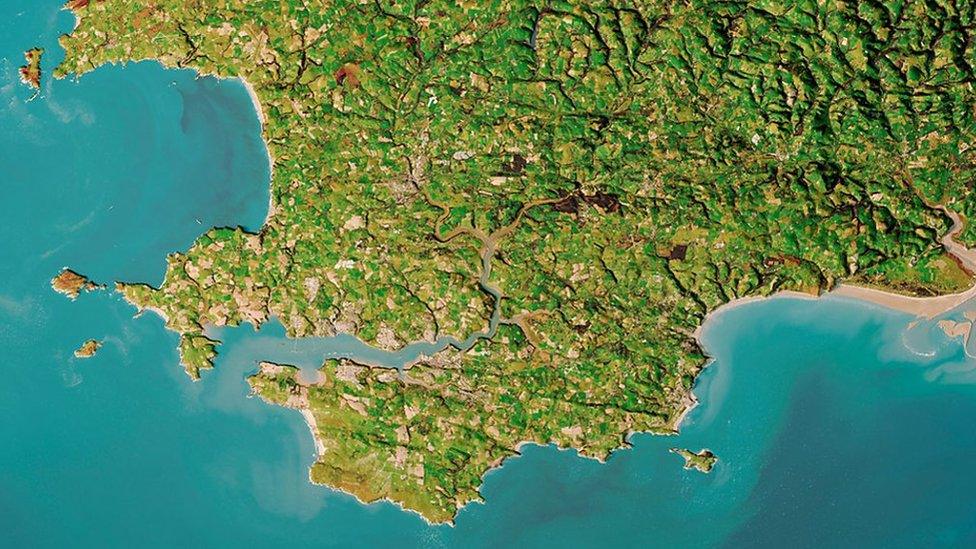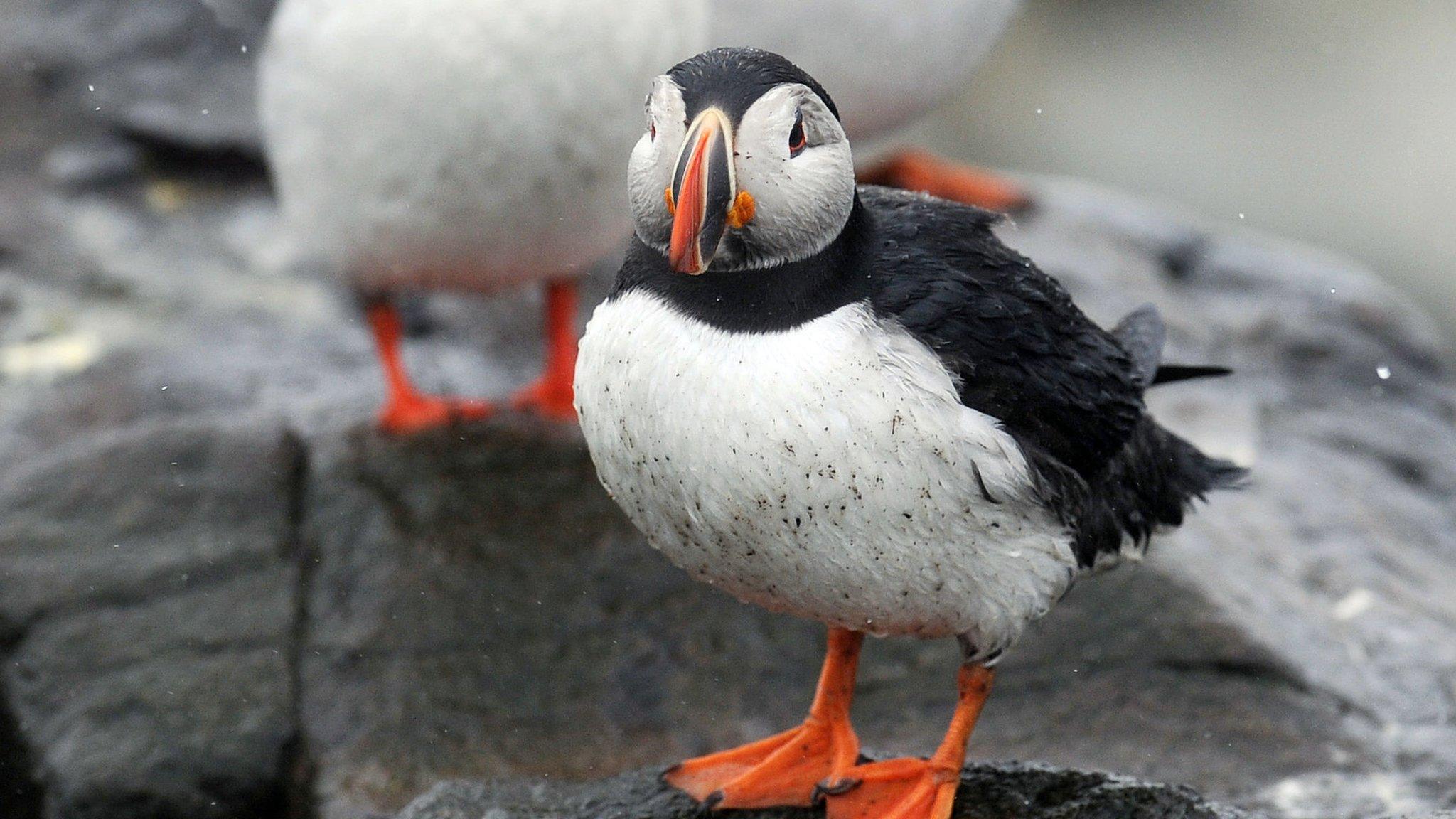Severn Estuary: Work continues on flood defences at Avonnmouth
- Published

The work is scheduled to finish in 2026 or 2027
A project to strengthen flood defences along the Severn Estuary is continuing with a major milestone met.
The work at Avonmouth Port near Bristol involves 14m-high steel sheets being driven into the ground and earth banks built up.
Concrete walls and flood gates are also being constructed as part of a battle to protect 2,500 homes against rising sea levels.
As part of the work, 80 hectares of new wetlands for birds are being created.
This will be done by flooding land at Northwick, South Gloucestershire and Hallen Marsh, Bristol,
Bristol City Council, South Gloucestershire Council and the Environment Agency are working together on the £100m Avonmouth Severnside Enterprise Area scheme.

Steel sheets are being driven into the earth as part of the defences
The 10.5m (17km)-long flood defence system will run alongside the Severn from Aust in South Gloucestershire to Lamplighter's Marsh, at the mouth of the River Avon in Bristol.
South Gloucestershire Council leader Toby Savage said the defences would protect housing but also give businesses the confidence to move to the area.
"This area does have a flood risk and there will be some businesses that choose not to invest here because of that," he said.
"As a result of that public investment across three partners we can give confidence to the business community that this is a part of the West of England to invest in.
"We think that we've got the potential to generate 12,000 new jobs by 2026."

South Gloucestershire Council leader Toby Savage said he hoped the work would give businesses confidence to move to the land next to the Severn
Bristol City Council cabinet member Don Alexander said: "We have a lot of wading birds around here, it's an internationally-known and protected area.
"So it's exciting that in a city you can create 80 hectares of new wetlands."

Follow BBC West on Facebook, external, Twitter, external and Instagram, external. Send your story ideas to: bristol@bbc.co.uk , external
- Published8 October 2021

- Published30 September 2021

- Published23 August 2013
